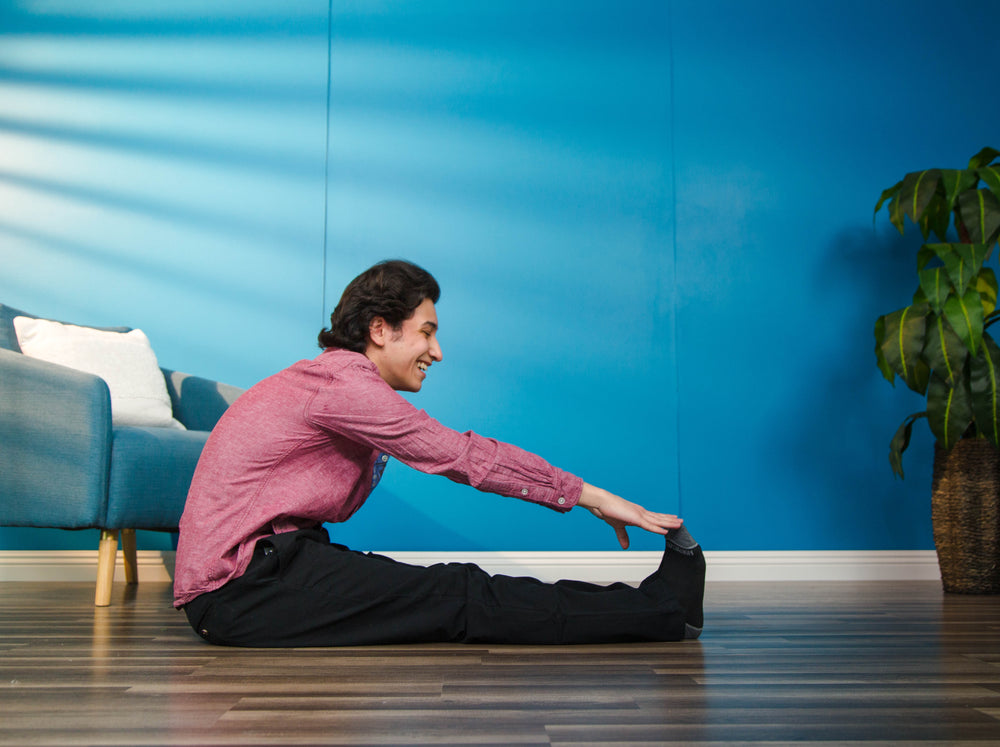What are the Williams Flexion Exercises?
Dr. Paul C. Williams, an orthopedic surgeon, created the Williams Flexion Exercises or Williams Lumbar Flexion Exercises to help people manage lower back pain without surgery. His method was to strengthen the abdominal muscles, enhance mobility, and strengthen the glutes. Dr. Williams thought that lower back pain was caused by stress on the intervertebral disc from poor posture. The goal of his exercises was to stretch and increase mobility in the muscles connected to the lower back. The most common exercises he focused on were the pelvic tilt, partial sit-ups, single knee-to-chest, double knee-to-chest, hamstring stretching, standing lunges, seated trunk flexion, and squats.
Who should do the Williams Flexion Exercises?
Some with spinal stenosis, spondylolisthesis, and lumbar facet joint problems have found the Williams Flexion Exercises helpful for their lower back pain. To know for sure if you should try these exercises, consult your doctor. Before you start any new exercise regimen, you should always consult your doctor.
How to do the Williams Flexion Exercises
Pelvic tilt

- Lie on your back with your knees bent and feet flat on the floor.
- Press the small of your back into the ground as you tilt your pelvis backwards.
- Hold this position for a few seconds and release.
Partial Sit-ups

- Lie on your back with your knees bent and feet flat on the floor.
- Cross your arms over your chest.
- Roll yourself up starting from the top of your head until your shoulder blades are lifted off the ground.
- Rest back down.
- Repeat as needed.
Single Knee-to-chest

- Lie on your back with your knees bent and feet flat on the floor.
- With your left leg straight, grab your right knee and pull it toward your chest. (Note: If you have knee pain, grab under your knee at the thigh.)
- Hold for a few seconds and release.
- Repeat on both sides.
Double Knee-to-chest

- Lie on your back with your knees bent and feet flat on the floor.
- Grab your both knees and pull them toward your chest. (Note: If you have knee pain, grab under your knees at the thigh.)
- Hold for a few seconds and release.
Hamstring Stretch

- Sit on the ground with your legs together straight in front of you.
- Bending at the waist, reach for your toes to pull your toes toward you.
- Hold until you feel like you’ve had a good stretch.
Standing Lunges

- Start by standing with the feet shoulder width apart.
- Lunge your right foot forward. Your knee should not go past your ankle.
- Do this on both sides.
Seated Trunk Flexion

- Sit in a chair with your feet flat on the ground.
- Lift your arms up behind your head.
- Lean forward at the waist as far as you can.
- Hold for a few seconds and release.
Full Squat

- Start by standing with the feet shoulder width apart.
- Keeping your back straight, bend at the knees and squat down as far as you can.
- Once you’re down, bounce up and down a few inches about 20 times.
- Stand up and repeat 3 or 4 times.
Need other ideas to reduce back pain and tension?
If you’re struggling with any of these poses or exercises, it might be beneficial for you to try the Chirp Wheel+. The Chirp Wheel+ will help to elongate your spine and release tension in the muscles surrounding your spine. For more information on the Chirp Wheel+, check out gochirp.com.

References
Dynamic Chiropractic. (1999, January 1). Whatever Happened to Williams. Retrieved from https://www.dynamicchiropractic.com/mpacms/dc/article.php?id=35008
Physiotherapy Treatment. (2009). Williams Flexion Exercises. Retrieved from https://www.physiotherapy-treatment.com/williams-flexion-exercises.html
Sears, B. (2019, October 7). The Easiest Exercise to Improve the Way Your Back Bends Forward. Retrieved from https://www.verywellhealth.com/low-back-flexion-exercise-2696191








